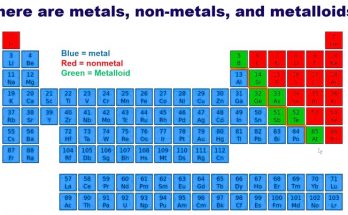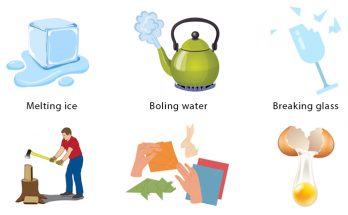Objective of Respiration– Respiration is a biological process where energy is released from food, and it is crucial for cellular functions like nutrition, transport, excretion, and reproduction.
Table of Contents
Cellular Respiration-
- Definition- The breakdown of glucose in cells to release energy.
- Oxygen’s Role– It helps break down glucose into energy, carbon dioxide, and water.
- Location- Cellular respiration occurs in the mitochondria.
Breathing vs. Respiration-
- Breathing is a physical process of inhaling oxygen and exhaling carbon dioxide.
- Connection- The oxygen inhaled is used for cellular respiration.
Types of Respiration-
- Aerobic Respiration- Occurs in the presence of oxygen, yielding carbon dioxide, water, and maximum energy from glucose.
- Anaerobic Respiration- Occurs in the absence of oxygen, yielding products like alcohol, carbon dioxide, and energy (e.g., in yeast).
Adaptability in Respiration-
- Some organisms, like yeast, can perform anaerobic respiration in oxygen-deficient environments.
Physical Activities and Respiration-
- During strenuous activities, breathing rate increases to meet the body’s higher energy demands by supplying more oxygen.
Role of Food in Respiration-
- Food provides glucose, the primary substrate for respiration.
Equations for Respiration-
- Aerobic in Animals- Glucose + Oxygen → Carbon Dioxide + Water + Energy
- Anaerobic in Animals- Glucose → Lactic Acid + Energy
- Anaerobic in Yeast- Glucose → Ethanol + Carbon Dioxide + Energy
Anaerobic Respiration in Muscle Cells During Exercise-
- Occurs when there’s insufficient oxygen, leading to lactic acid buildup and potential muscle cramps.
- Cramps can be relieved by increasing oxygen supply, breaking down the lactic acid.
Breathing Rate Variability Based on Activity Levels-
- Breathing rate varies with physical activity levels; it increases during exertion due to higher oxygen needs.
Mechanism of Breathing-
- Involves nostrils, nasal cavity, windpipe, ribs, and diaphragm.
- Inhalation- Ribs and diaphragm move to increase chest cavity volume, drawing air in.
- Exhalation- Ribs and diaphragm revert, decreasing volume and pushing air out.
- Observing breathing via physical activities like chest expansion can aid understanding.
Understanding Breathing Through Measurement and Models-
- Measuring chest expansion during deep breaths.
- Constructing models to demonstrate lung and diaphragm function during breathing.
Understanding Exhaled Air-
- Components of exhaled air include a higher concentration of carbon dioxide than inhaled air.
- Experiments like the lime water test and exhaling on a mirror demonstrate the presence of carbon dioxide and water vapour in exhaled air.
Breathing Mechanisms in Animals-
- Mammals (e.g., elephants, lions)- Use lungs to inhale oxygen and exhale carbon dioxide.
- Insects (e.g., cockroaches)- Have a tracheal system with spiracles and tracheae allowing direct diffusion of oxygen to cells.
- Annelids (e.g., earthworms)- Breathe through their moist and slimy skin without specialised organs.
- Amphibians (e.g., frogs)- Use both lungs and skin for respiration, enabling them to live in aquatic and terrestrial environments.
Breathing Underwater-
- Fish- Have gills with a rich supply of blood vessels for extracting dissolved oxygen from water while expelling carbon dioxide.
Respiration in Plants-
- Mechanism- Involves aerobic and anaerobic pathways, with oxygen uptake through roots and leaves and carbon dioxide release mainly via stomata.
- Overwatering- Can lead to oxygen deprivation in soil, affecting root respiration and plant health.
Respiration in Yeasts-
- Perform anaerobic respiration, producing alcohol as a by-product, essential in the alcoholic beverage industry.
Breathing Rate-
- At rest- Adult average is 15–18 breaths per minute.
- During exercise- Can increase up to 25 times per minute, with deeper breaths for enhanced oxygen intake and carbon dioxide expulsion.
Smoking and Air Impurities-
- Smoking damages lungs and is linked to cancer.
- Air impurities are filtered by nasal hair; sneezing expels particles that bypass this filter.
- Pranayama can enhance lung capacity and oxygen intake, supporting cellular energy production.
Oxygen and Organisms-
- Essential for cellular respiration in many organisms but toxic to anaerobic organisms.
- Pure oxygen can be harmful over prolonged periods, potentially leading to oxygen toxicity.
Also Check –Class 7 Science -Chapter 10- Respiration in Organisms- Complete Notes
Also Check – NCERT Exemplar Solutions- Class 7 Science Chapter 6- Respiration in Organisms.
Also Check – Chapter 10- Respiration in Organisms–Class 7 science- Question and Answer (Fill in the Blanks)
Also Check –Chapter 10- Respiration in Organisms–Class 7 science Question and Answer (MCQs)
Also Check –Chapter 10- Respiration in Organisms–Class 7 Science – Question and Answer (Long Answer)
Also Check –Chapter 10- Respiration in Organisms–Class 7 science Question and Answer (Short)
Also Check –Class 7 science -Chapter 10- Respiration in Organisms– Definition and Explanation of Important Keywords
Also Check –NCERT Solutions for Class 7 Science Chapter 10 Respiration in Organisms
Also Check –What is Cellular Respiration Class 7 – Chapter 10- Respiration in Organisms
Also Check –What is Respiration Class 7 – Chapter 10- Respiration in Organisms

